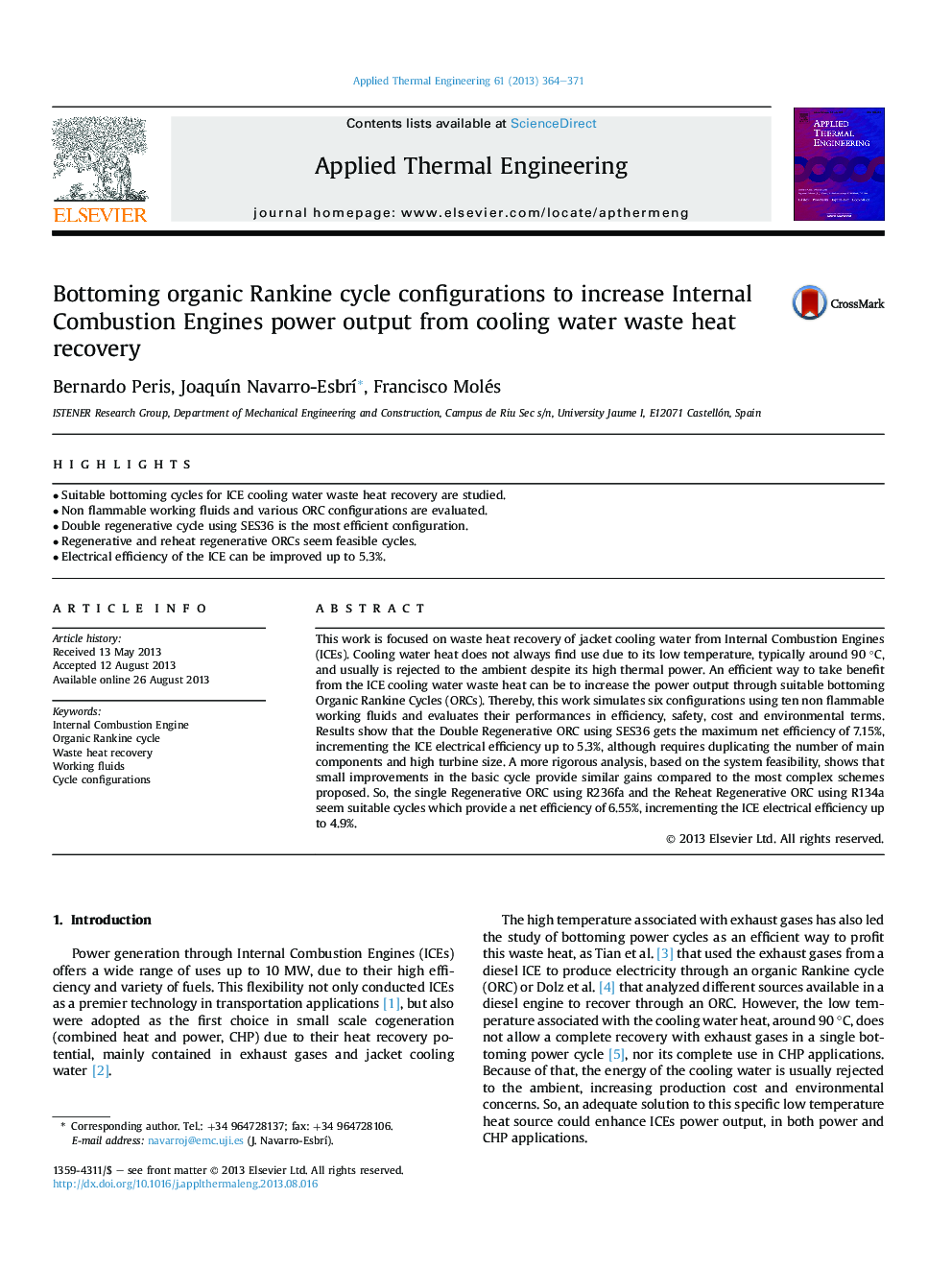| Article ID | Journal | Published Year | Pages | File Type |
|---|---|---|---|---|
| 646593 | Applied Thermal Engineering | 2013 | 8 Pages |
•Suitable bottoming cycles for ICE cooling water waste heat recovery are studied.•Non flammable working fluids and various ORC configurations are evaluated.•Double regenerative cycle using SES36 is the most efficient configuration.•Regenerative and reheat regenerative ORCs seem feasible cycles.•Electrical efficiency of the ICE can be improved up to 5.3%.
This work is focused on waste heat recovery of jacket cooling water from Internal Combustion Engines (ICEs). Cooling water heat does not always find use due to its low temperature, typically around 90 °C, and usually is rejected to the ambient despite its high thermal power. An efficient way to take benefit from the ICE cooling water waste heat can be to increase the power output through suitable bottoming Organic Rankine Cycles (ORCs). Thereby, this work simulates six configurations using ten non flammable working fluids and evaluates their performances in efficiency, safety, cost and environmental terms. Results show that the Double Regenerative ORC using SES36 gets the maximum net efficiency of 7.15%, incrementing the ICE electrical efficiency up to 5.3%, although requires duplicating the number of main components and high turbine size. A more rigorous analysis, based on the system feasibility, shows that small improvements in the basic cycle provide similar gains compared to the most complex schemes proposed. So, the single Regenerative ORC using R236fa and the Reheat Regenerative ORC using R134a seem suitable cycles which provide a net efficiency of 6.55%, incrementing the ICE electrical efficiency up to 4.9%.
